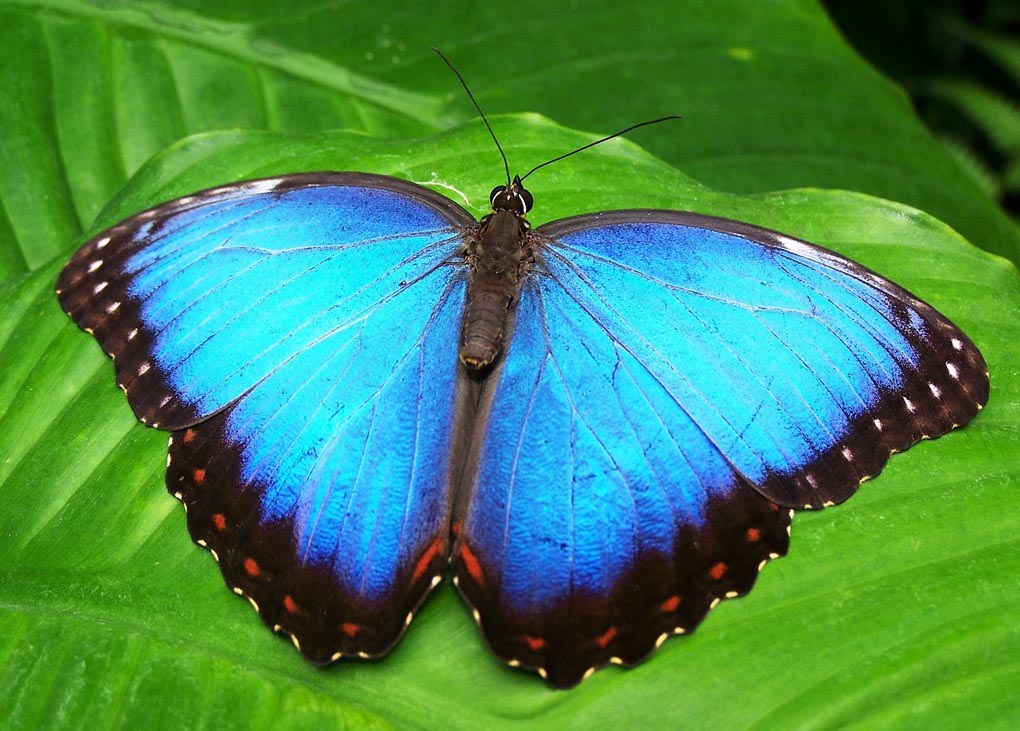Researchers from Shenzhen University in China have created a new nanofilm inspired by the structures in butterfly wings that could significantly reduce the energy needed for cooling buildings or vehicles.
In a recent paper published in Science Daily, researchers explained how the new films avoid the heating effect usually experienced by coloured objects absorbing light on a hot day. According to the researchers, the films, which don’t absorb light, could be used on the outside of buildings, vehicles and equipment to reduce the energy needed for cooling while preserving vivid colour properties.
“In buildings, large amounts of energy are used for cooling and ventilation, and running the air conditioner in electric cars can reduce their driving range by more than half,” says research team leader Wanlin Wang. “Our cooling films could help advance energy sustainability and carbon neutrality.”
The researchers say they were able to demonstrate that the films they developed lowered the temperature of colourful objects to about 2°C below the ambient temperature. They also found that when left outside all day, the blue version of the films was approximately 26°C cooler than traditional blue car paint. This represents an annual energy savings of approximately 1,377MJ/m2 per year, says Wang.
“With our new films, excellent cooling performance can be achieved, no matter the desired colour, saturation or brightness. They could even be used on textiles to create clothes of any colour that are comfortable in hot temperatures.”
According to Science Daily, a car with blue paint appears blue because it absorbs yellow light and reflects blue light. The large amount of light that is absorbed heats the car. Morpho butterflies, however, produce their highly saturated blue colour based on the nanostructure of their wings, the researchers say. The design of the cooling nanofilm mimics these structures to produce vibrant colours that don’t absorb light.
To mimic the butterfly wings, researchers placed a disordered material (rough frosted glass) under a multilayer material made of titanium dioxide and aluminum dioxide. They then placed this structure on a silver layer that reflects all light, thus preventing the absorption of solar radiation and the heating associated with that absorption.
According to Wang, the film’s colour is determined by how components within its multilayered structure reflect light. To create blue, for example, the multilayer material is designed to reflect yellow light in a very narrow range of angles while the disordered structure diffuses the blue light across a broad area.
“Thanks to the layered structure we developed, we were able to extend the passive cooling method from colourless objects to colourful ones while preserving colour performance,” says Wang. “In other words, our blue film looks blue across a large range of viewing angles and doesn’t heat up because it reflects all the light. In addition, high saturation and brightness can be achieved by optimising the structure.”
To test the new technology, the researchers created blue, yellow and colourless films, and placed these outdoors on surfaces such as roofs, cars, cloth and mobile phones from 9am to 4pm in both winter and summer. Using thermocouple sensors and infrared cameras to measure temperature, they found that the cooling films were more than about 15°C cooler than the surfaces they were placed on in the winter and about 35°C cooler in the summer.
“Replacing the silver film with an aluminum film would make the films less expensive and manufacturable by a scalable fabrication method such as electron beam evaporation and magnetron sputtering,” says Wang.
Having demonstrated the cooling and colour performance of the films, the researchers now plan to study and optimise other properties such as mechanical and chemical robustness.
Story source: Science Daily
 Louise Belfield
Louise Belfield


Leave a Reply